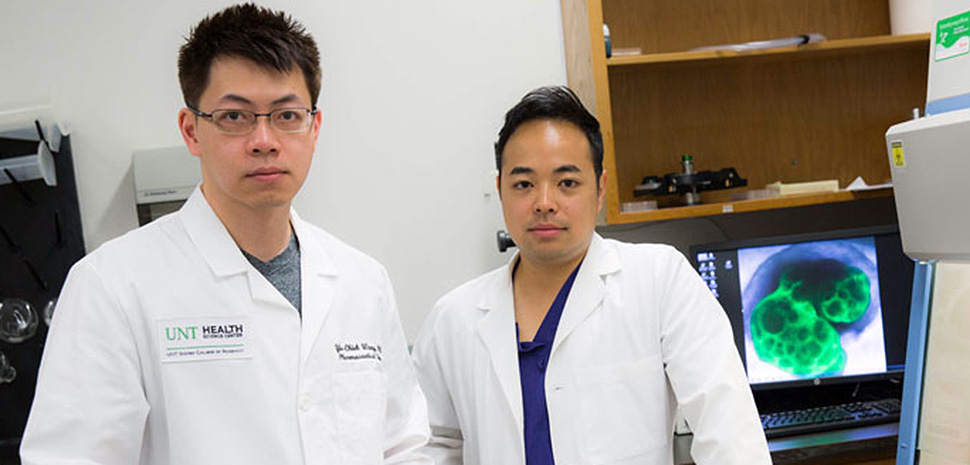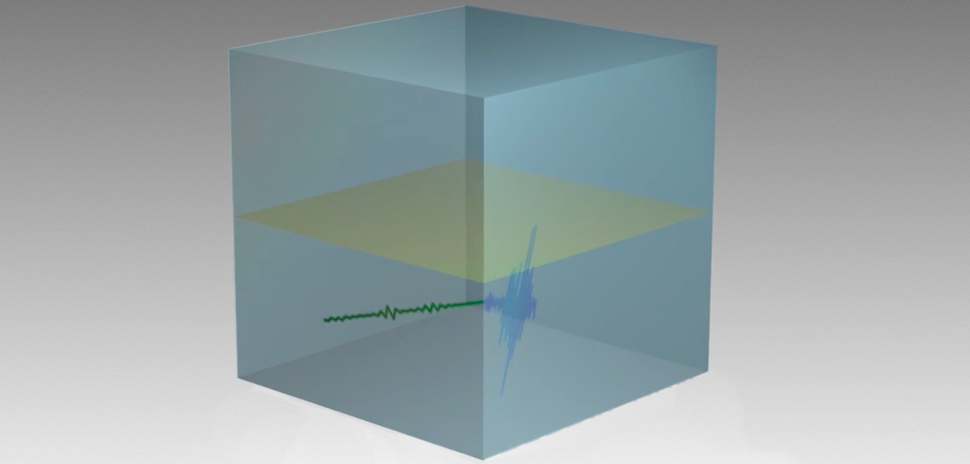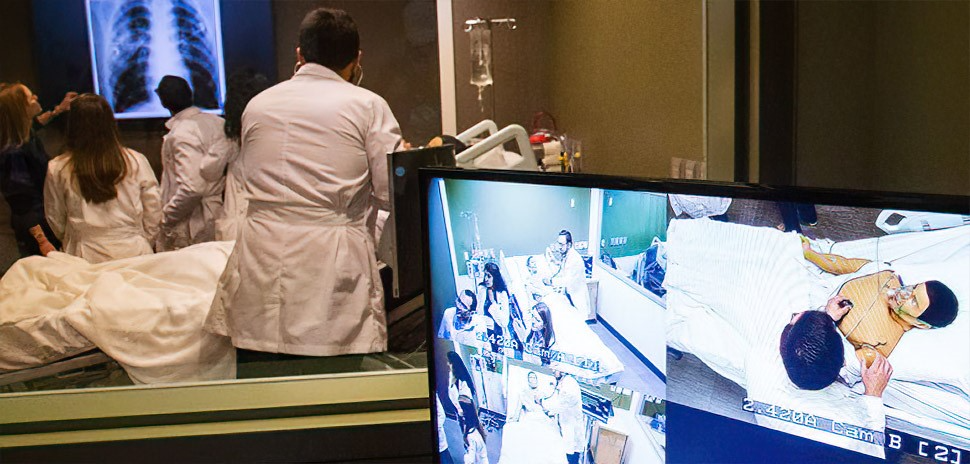![]() Every week, we do a little research of our own. We’re looking for scientists, professors, engineers, entrepreneurs—anybody, really—engaging in research and development across North Texas.
Every week, we do a little research of our own. We’re looking for scientists, professors, engineers, entrepreneurs—anybody, really—engaging in research and development across North Texas.
There’s plenty of good work being done. If you want to put R&D under your microscope, sign up for our e-newsletter.
UTD Scientist’s Crystal Defies Nature as it Cloaks Sound Waves
Work by a local scientist might just bring a hush to the room. Physicists at The University of Texas at Dallas and Wuhan University in Wuhan, China, have devised an artificial structure that doesn’t reflect sound and, in fact, bends it in a way that does not occur in nature.
Yep, you read correctly. It defies nature.
According to a release from UT Dallas, the results of the research could lead to new directions in wave manipulation, such as acoustic cloaking technologies, as well as advances in photonics and electronics. Theoretical physicist Fan Zhang, assistant professor of physics at UT Dallas, is one of the authors of the study published in Nature.
“We have demonstrated that it is possible to construct a sonic crystal to manipulate sound in a way that is forbidden in nature.”
Fan Zhang
Along with his collaborators, Zhang came up with a structure called a Weyl sonic crystal, which has unique properties that theoretically allow acoustic waves to exhibit zero reflection and negative refraction as the waves hit the interface between two facets of the crystal.
“Because of the negative refraction and zero reflection of sound at the interface of two facets, this type of crystal could act kind of like a cloaking device for sound,” Zhang said in the release.
What’s refraction, you ask? That’s what occurs when waves such as light or sound bend slightly as they travel from one medium to another—think of how light from a flashlight bends when it enters water. According to the release, in negative refraction, a beam of light or sound is bent back in a mirror-image direction from what one would normally expect. Negative refraction does not occur in nature, UTD said in the release, but researchers have engineered artificial substances that have that property.
UT Dallas said that Zhang teamed with experimentalists at Wuhan University during a trip to his hometown to build the novel Weyl sonic crystal—a cube that’s about the size of a desktop computer. They created it using a 3-D printer, and the crystal proved to be effective at producing no reflection and negative refraction.
“We have demonstrated that it is possible to construct a sonic crystal to manipulate sound in a way that is forbidden in nature,” Zhang said. “This new knowledge could open up some important applications not only in acoustics but also in photonics and electronics.”

Illustration: Eraxion via iStock
UT Southwestern looks at treatment that ‘starves’ lung cancer
You’ve probably heard the old wives’ tale: Feed a cold and starve a fever. Could a similar saying become apropos in the fight against lung cancer?
“We uncovered a new mechanism that expands our understanding of how cancer cells reprogram their metabolism to provide energy for rapid growth as they form tumors.”
Kathryn O’Donnell
Researchers at UT Southwestern Medical Center are looking at a possible treatment that targets an enzyme on the surface of some lung cancer cells that help feed the cancer.
“In this study, we found that the enzyme strongly promoted the growth of certain types of lung cancer cells. We uncovered a new mechanism that expands our understanding of how cancer cells reprogram their metabolism to provide energy for rapid growth as they form tumors,” O’Donnell said in a release.
The enzyme is called transmembrane serine protease 11B, or TMPRS11B for short, and is the subject of a UT Southwestern study published in the journal Cell Reports. TMPRS11B was identified by a team led by Kathryn O’Donnell, assistant professor of molecular biology, while searching for genes that are able to convert precancerous lung cells into malignant cells that then form tumors.
According to the release, the research focused on the TMPRS11B’s ability to promote the movement of lactate, which is a byproduct of cell metabolism that long was thought to be a waste product. But, UT Southwestern said that groundbreaking research by professor Dr. Ralph DeBerardinis’ lab discovered that lactate actually provides fuel for growing tumors. Find out more about the research here.

Yu-Chieh Wang, left, and Victor Lin, of the University of North Texas Health Science Center College of Pharmacy. [Photo: Jill Johnson, UNTHSC]
UNTHSC research discovers possible treatment for melanoma
Researchers at the University of North Texas Health Science Center have discovered a new targeted treatment for melanoma, a deadly form of skin cancer, without harming healthy cells
According to a release, the discovery was made while the researchers were studying a rare genetic disorder called NGLY1 deficiency. Their research was published in the British Journal of Cancer.
“When melanoma cells lose NGLY1, they, in fact, die very quickly.”
Yu-Chieh Wang
Melanoma kills roughly 9,000 people a year in the United States, and many scientists believe that exposure to ultraviolet radiation from the sun, along with genetic and environmental factors, are the leading causes of melanoma.
UNTHSC said that the discovery came when researchers in the UNT System College of Pharmacy were studying a missing protein that plays a role in NGLY1 deficiency. That’s a disorder that is so rare only about 60 people around the world have been diagnosed since it was identified in 2012, UNTHSC said.
Yu-Chieh Wang, Ph.D., senior author and Assistant Professor of Pharmaceutical Sciences, said that while trying to understand this genetic disorder, his team realized that melanoma cells are vulnerable to the loss of NGLY1 activity.
“People born with NGLY1 deficiency are alive while presenting developmental delays,” Wang said in the release. “But when we studied the developmental variations caused by NGLY1, we found that the NGLY1 protein could be a very attractive cancer target.”
When the scientists looked at how the protein acts in the body, they discovered that when NGLY1 was inhibited, normal cells survived while the melanoma cells didn’t.
“When melanoma cells lose NGLY1, they in fact, die very quickly,” Wang said.
READ NEXT
R&D: UNTHSC Seeks to Give Stroke Victims More Time; UTSW Examines Heart Issues & Race
![]()

































